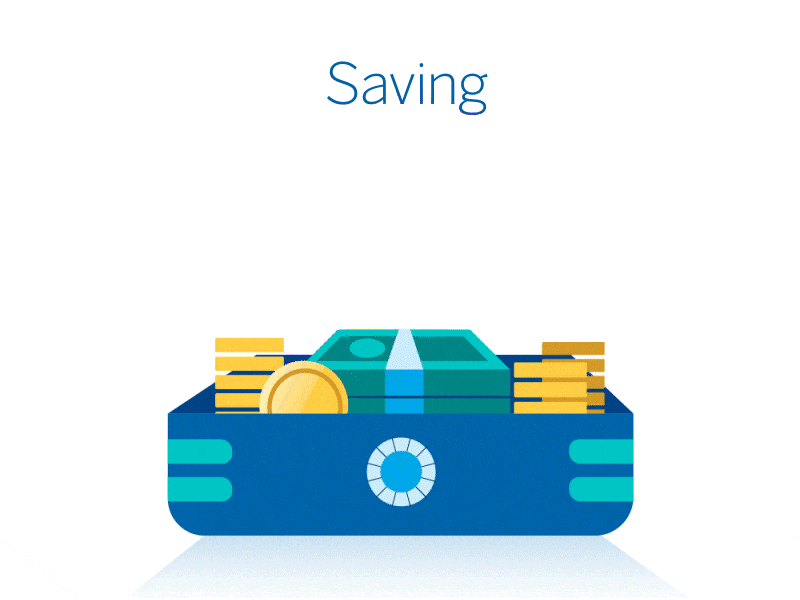Understanding in detail what investing is and how it works reduces fear and uncertainty. Stocks, Treasury bills, government bonds, venture capital, real estate purchases, commodities, or cryptocurrencies... There are many ways for our money to generate returns.
What is an Investment?
The first question to be answered is: what is an investment? The RAE (Real Academia Española) defines the act of investing as: “to spend (a certain amount of time or money) on something.” In other words, you can invest time in studying a curriculum to obtain a specific degree. However, in this case, we need to focus on the definition related to money.
Your investments are just a drop in a vast ocean. all seeking the same objective: to recover the initial amount plus an associated profit. You can invest in buying property to rent out, in the stock market, in the fixed income market, or in a variety of other assets. Ultimately, an investment involves allocating money to purchase a specific asset with the aim that, over time, the asset will either increase in value or generate monthly, quarterly, or annual income.
The best of both worlds
What types of investments are there?
We could talk at length, or even write a book, about each type of investment that exists. For this reason, it is important to highlight the most common and accessible types of investments for all kinds of people.
- Stock market. When we talk about investment, we often refer to the stock market. The stock market is the equity market and operates in a simple manner. Within the stock market, you can buy shares of companies, which are small pieces of ownership in a company. In other words, with this type of investment, you acquire a portion of a business. These shares can increase in value over time if the business performs well, and they can also distribute profits to shareholders in the form of dividends.
- Fixed income. The second most well-known type of investment is fixed income. This market includes products such as Treasury bills or government bonds. In essence, with this type of investment, money is lent to a country, public administration, or a company with the aim of having the principal repaid along with interest. In this type of investment, the amount that the investor can earn is known in advance, which is why it is called fixed income.
- Real estate investment. Finally, the third most popular investment is real estate. Here, the investor buys a property to rent out and receive a monthly return, or to sell it later once the property's value has increased. In this case, both approaches can be used: renting the property for a period of time and then selling it.
There are many other types of investments, such as investment in cryptocurrencies, venture capital, options and futures, commodities, and many more.

How do investments work?
The way investments work varies depending on the type. In the case of the stock market, an investor who buys a share might see that, over the years, the business performs well and that a share bought at, for example, 10 euros, later increases in value to 17 euros. By selling it to a new investor, they would make a profit.
However, there is also the risk that the company may not do well, causing its value to decrease. In such a case, the share that was initially worth 10 euros could drop to 5 euros over the years. Additionally, in the stock market, the investor can also receive dividends, which are the profits the company distributes among its shareholders.
On the fixed income side, the investment operates in a straightforward manner. The investor buys a bond or bill with a predetermined interest rate. Next, one needs to consider for how long the money will be lent to the bond issuer. If the period is three years, the investor would receive the fixed interest annually on the amount lent and, at the end of the term, would get back the initial investment. For example, if they invested 10,000 euros at a 3.5% interest rate, they would receive 350 euros each year and, at the end, would also recover the 10,000 euros.
How to invest?
Just as there are many types of investments, there are many ways to invest. From trading to long-term investing, and from direct investments to collective investment vehicles, the most common methods are direct and indirect investing.
Direct investing involves directly purchasing a share, or group of shares, personally selected by the investor. Similarly, the investor can also directly buy a Treasury bill or a bond. In this approach, the investor is responsible for selecting each asset.
Indirect investing is often the simplest and least risky method. In this case, products like mutual funds or ETFs invest the money of a group of investors into a large pool of stocks or bonds. Thus, investment decisions are made by a group of expert analysts. Additionally, the investment is diversified across a broader range of assets to spread risk.





